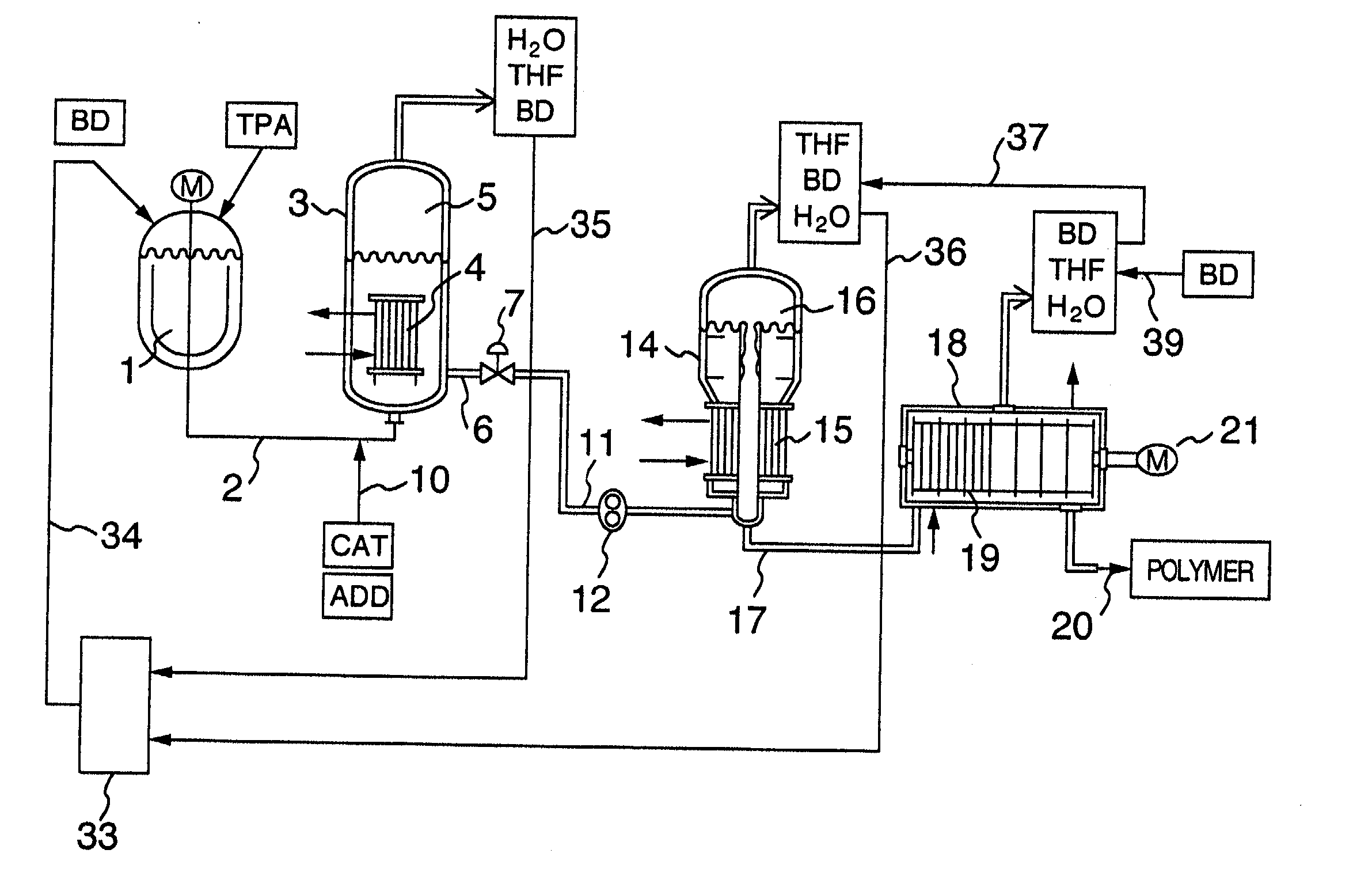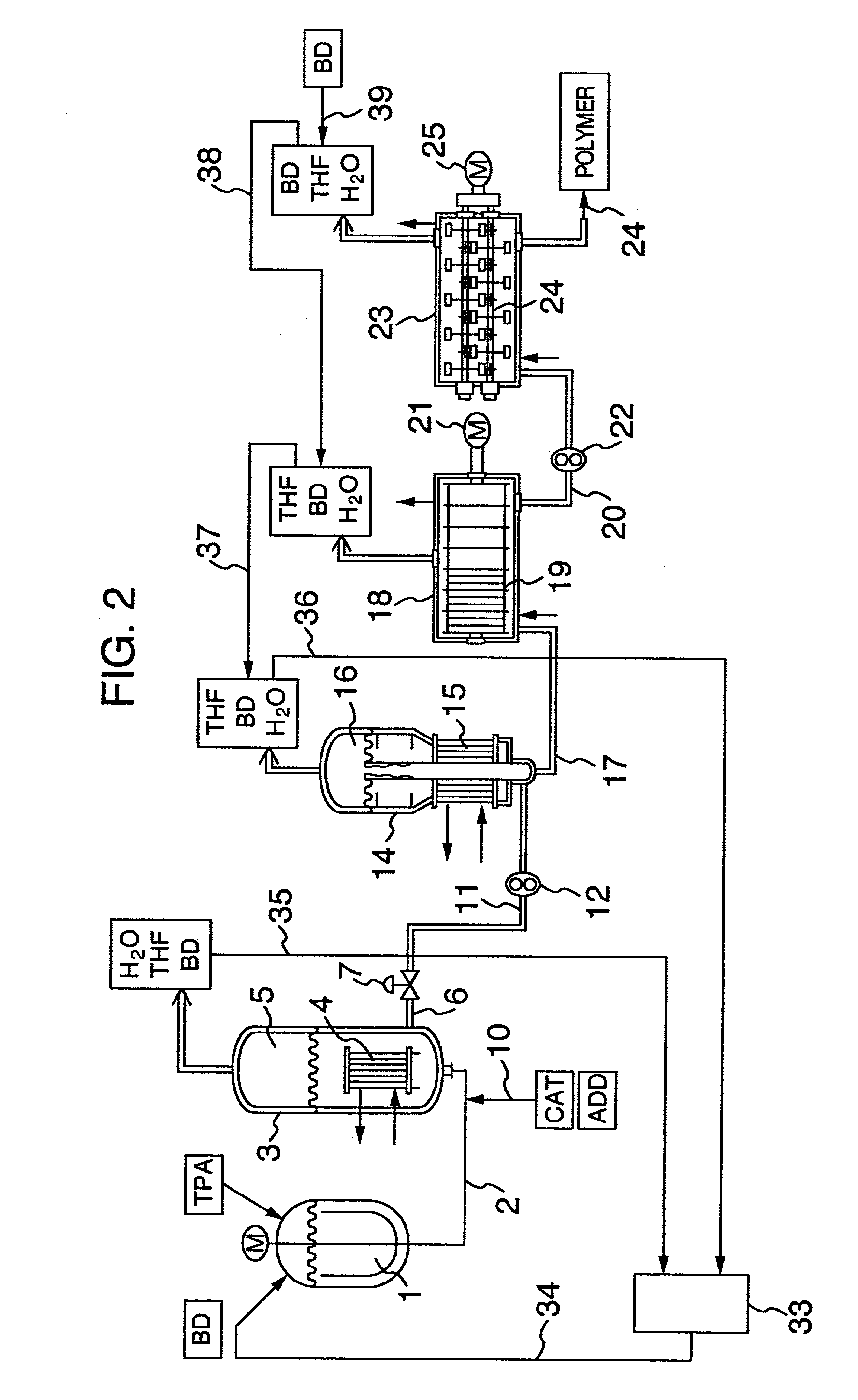Process for continuously producing polybutylene terephthalate
a technology of polybutylene terephthalate and process, which is applied in the direction of chemistry apparatus and processes, liquid-gas reaction processes, chemical/physical/physico-chemical processes, etc., can solve the problems of high maintenance cost, high installation cost, and poor quality of the operation of the apparatus, and achieve precise quality control and low polymerization
- Summary
- Abstract
- Description
- Claims
- Application Information
AI Technical Summary
Benefits of technology
Problems solved by technology
Method used
Image
Examples
examples
[0031] The present invention will be described in detail below, referring to Examples, to which the present invention will not be limited.
[0032] In Examples, an intrinsic was determined with an Ostwald viscometer at 30.degree. C., using a solvent of 50 wt. % phenol and 50 wt. % tetrachloroethane, and acid value was determined by neutralization titration upon dissolution of PBT in benzyl alcohol as a solvent with heating at 230.degree. C. for 5 minutes. As shown in Table 1. PBT was produced by continuous operation of the direct esterifying process of TPA and BD. PBT was produced under esterifying reaction conditions at a reduced pressure in Examples 1 and 2 and under esterifying reaction conditions at a reduced pressure in Example 3, where an intrinsic viscosity of 0.85 dl / g was obtained only by melt polymerization. As shown in Example 1, high quality PBT with an acid value of 10 eq / ton was obtained in the esterifying reaction at a reduced pressure and a low reaction temperature for ...
PUM
| Property | Measurement | Unit |
|---|---|---|
| temperatures | aaaaa | aaaaa |
| temperatures | aaaaa | aaaaa |
| molar ratio | aaaaa | aaaaa |
Abstract
Description
Claims
Application Information
 Login to View More
Login to View More - R&D
- Intellectual Property
- Life Sciences
- Materials
- Tech Scout
- Unparalleled Data Quality
- Higher Quality Content
- 60% Fewer Hallucinations
Browse by: Latest US Patents, China's latest patents, Technical Efficacy Thesaurus, Application Domain, Technology Topic, Popular Technical Reports.
© 2025 PatSnap. All rights reserved.Legal|Privacy policy|Modern Slavery Act Transparency Statement|Sitemap|About US| Contact US: help@patsnap.com



